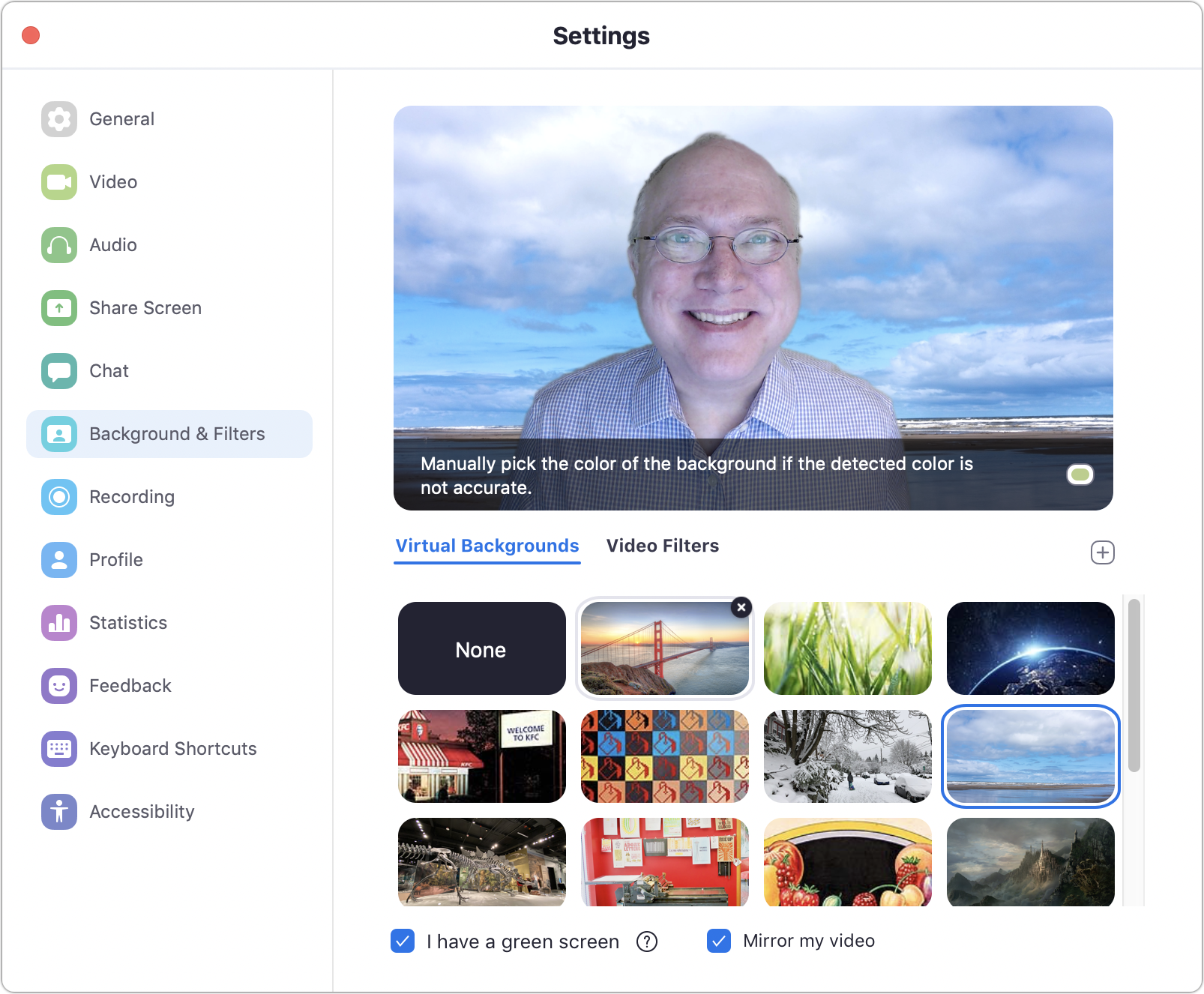Improve Your Video
You can fix lighting, add a backdrop, and make other changes that bump up your video quality. Here are a few tips that can help you produce the best conditions.
Manage Your Camera
Whatever kind of camera or device you’re using, make sure the camera is positioned and angled well to show your entire face, mostly, er, head on (Figure 1). Nobody wants to look up your nose or see just your eyes and forehead.

Stabilize a Mobile Device
If you own a relatively recent smartphone or tablet, it may have a very nice front-facing camera for selfies and videos. But other people will find it distracting if you’re holding the device in your hand and it’s constantly jiggling or moving.
There are a zillion smartphone and tablet tripods in the $15 to $40 range that include an adjustable clamp to fit any size of device. Or, you can buy an adapter for about $10 to $20 for smartphones and tablets that works with a tripod you already own.
Frame Yourself on the Desktop
Depending on the type of camera you use, you might try these tricks:
Laptop: Put a laptop on a higher surface than you would normally use to type and work on. The screen should be close to level with your head. You can use a stack of books, an adjustable riser used to convert a table into a standing desk, or a laptop stand.
Integral display: For cameras built into a monitor’s top, you may need to adjust the display’s height or tilt it while in meetings to get the optimum angle.
Add-on: Cameras designed to plug in to a computer (typically via USB) almost always come with a clip, stand, or tripod mount. Whatever the case, place the camera lens at nearly eye height—or just a bit above—without obscuring your view of the monitor.
Change the Lights
Your lighting may not be ideal. In fact, it almost surely isn’t. At my workspace, my face is entirely blown out unless I tweak the placement of lights. You can try a few options:
Balance: Balance lights so there’s some light behind and some ambient light cast over you. Make sure you’re not lit entirely from behind. You will be hard to make out. Don’t point a light directly at you. This causes a webcam to overexpose your face, removing detail.
Adjust shades: Close or open window shades depending on the time of day and their position relative to the camera.
Add a ring light: Search on retailers for “studio ring lights,” which are simple rings of LEDs designed to cast a glow on your face. Some “selfie lights” are battery powered and clip on to a laptop or display.
You should also make sure that you don’t have an unintentional light source. On a desktop system, a display’s background color—especially on a two-monitor system—can wind up illuminating your face with an odd color or from the wrong angle. Try to remember to bring up a dark background or hide windows that are all or mostly white.
Let Zoom Add a Virtual Background
Zoom can swap in a background via the Settings > Background & Filter > Virtual Backgrounds option, which you can use to choose a still image or a looped video with a desktop app or a still image in iOS or iPadOS (Figure 2).

Zoom uses an algorithm to determine the edge between you and whatever is behind you. The algorithm is smart, but doesn’t always neatly cut out a background; consider a green screen (see below).
In iOS/iPadOS apps, you can only add a background during a meeting. Tap the More  icon and then tap Virtual Background.
icon and then tap Virtual Background.
In both mobile and desktop apps, turn off the background by clicking or tapping None in their respective background settings.
